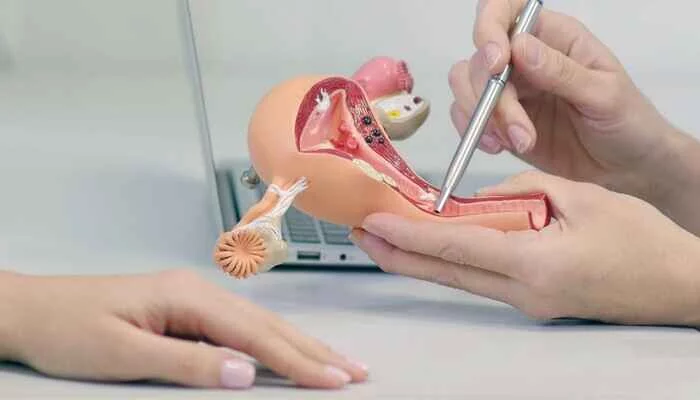Reasons for Gynecological Laparoscopy
What is Gynaecological Laparoscopy?
Gynecological laparoscopy is a minimally invasive surgical procedure that allows doctors to examine and treat various conditions affecting the female reproductive system. It involves inserting a tiny camera called a laparoscope through a small incision in the abdomen, which provides a clear view of the reproductive organs on a monitor. This procedure has revolutionized gynecological surgery by reducing the need for traditional open surgeries, resulting in fewer complications and a quicker recovery time for patients.
Reasons for Gynaecological Laparoscopy and Who are the Candidates?
There are numerous reasons why a doctor may recommend gynaecological laparoscopy. Some common indications include:
- Endometriosis: Laparoscopy helps diagnose and treat endometriosis, a condition where the tissue lining the uterus grows outside of it, causing pelvic pain and infertility.
- Fibroids: Laparoscopy allows surgeons to remove uterine fibroids, benign growths that can lead to heavy menstrual bleeding, pain, and fertility issues.
- Ectopic pregnancy: This procedure helps in the diagnosis and treatment of ectopic pregnancies, where a fertilized egg implants outside the uterus, usually in the fallopian tubes.
- Pelvic inflammatory disease: Laparoscopy aids in identifying and treating pelvic inflammatory disease (PID), an infection in the female reproductive organs that can cause pain, infertility, and other complications.
- Tubal ligation: It is often used for sterilization in women who no longer wish to have children. Laparoscopy allows for a minimally invasive approach to block or remove the fallopian tubes.
Candidates for gynaecological laparoscopy are determined through a thorough evaluation by a gynecologist. Factors such as the severity of symptoms, previous treatments, and overall health are taken into consideration.
What is the Procedure Used for Gynecological Laparoscopy?
The gynecological laparoscopy procedure typically involves the following steps:
- Anesthesia: Before the procedure, the patient is usually given general anesthesia or, in some cases, local anesthesia with sedation to ensure comfort.
- Incision and insertion: A small incision, usually around half an inch, is made near the navel. Through this incision, a tube called a trocar is inserted, enabling the laparoscope and other surgical instruments to reach the reproductive organs.
- Carbon dioxide (CO2) insufflation: Carbon dioxide gas is gently infused into the abdomen, creating a space between the organs and the abdominal wall. This space provides better visibility and working area for the surgeon.
- Exploration and treatment: The laparoscope transmits images of the reproductive organs to a monitor, allowing the surgeon to thoroughly inspect and evaluate the condition. If necessary, additional small incisions may be made to insert instruments for surgical procedures, such as removing fibroids or endometriosis lesions.
- Closure: Once the surgery is completed, any incisions are closed with stitches or surgical tape.
Benefits of Gynecological Laparoscopy
Gynecological laparoscopy offers several advantages over traditional open surgeries. These benefits include:
- Minimally invasive: Laparoscopy uses small incisions, resulting in less scarring, reduced pain, and a faster recovery period compared to open surgeries.
- Shorter hospital stay: Patients undergoing laparoscopy generally spend less time in the hospital, allowing them to return to their daily routines sooner.
- Quicker recovery: With smaller incisions and less tissue trauma, laparoscopy often leads to a faster recovery and reduced post-operative complications.
- Improved cosmetic outcome: The smaller incisions used in laparoscopy result in minimal scarring, ensuring a better cosmetic outcome.
Who Will Perform Gynaecological Laparoscopy Surgeries?
Gynecological laparoscopy surgeries are typically performed by skilled gynecologic surgeons who have received specialized training in minimally invasive techniques. These surgeons possess expertise in utilizing laparoscopic instruments and interpreting the video images transmitted by the laparoscope. Their knowledge and experience ensure safe and effective procedures, resulting in favorable outcomes for patients.
Why Choose Ayaansh Hospital & IVF Centre Bangalore for the Best Gynecological Laparoscopy Surgeons?
Ayaansh Hospital & IVF Centre in Bangalore is renow
ned for its expertise in gynecological laparoscopy surgeries. Here are some reasons why it stands out:
- Advanced technology: Ayaansh Hospital utilizes state-of-the-art equipment and technology, ensuring precise and accurate laparoscopic procedures.
- Highly skilled surgeons: The hospital has a team of highly skilled gynecological laparoscopy surgeons with extensive experience and training in performing complex procedures.
- Patient-centric approach: Ayaansh Hospital prioritizes patient care and provides a supportive and empathetic environment throughout the entire treatment journey.
- Comprehensive services: In addition to gynecological laparoscopy, Ayaansh Hospital offers a wide range of fertility treatments and specializes in women’s cancer care, providing holistic care to patients.
Best Fertility Hospital & Women’s Cancer Hospital in Bangalore
Ayaansh Hospital & IVF Centre is recognized as one of the best fertility hospitals and women’s cancer hospitals in Bangalore. It is known for its commitment to excellence, compassionate care, and successful treatment outcomes in the fields of fertility and women’s health.
In conclusion, gynaecological laparoscopy offers a minimally invasive approach for diagnosing and treating various gynecological conditions. With its numerous benefits and advancements in technology, more individuals can benefit from the expertise of skilled laparoscopic surgeons like those at Ayaansh Hospital & IVF Centre, making it an ideal choice for gynecological laparoscopy surgeries.


